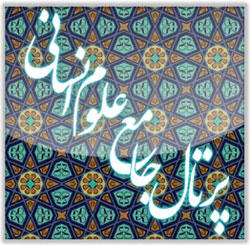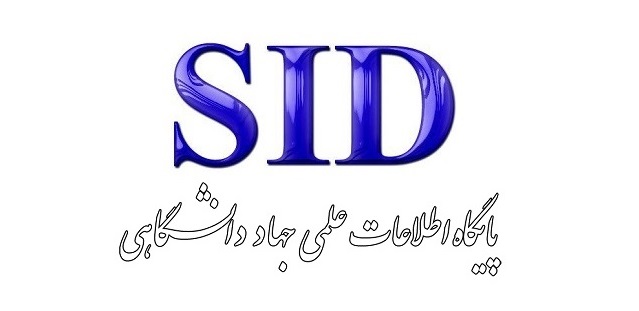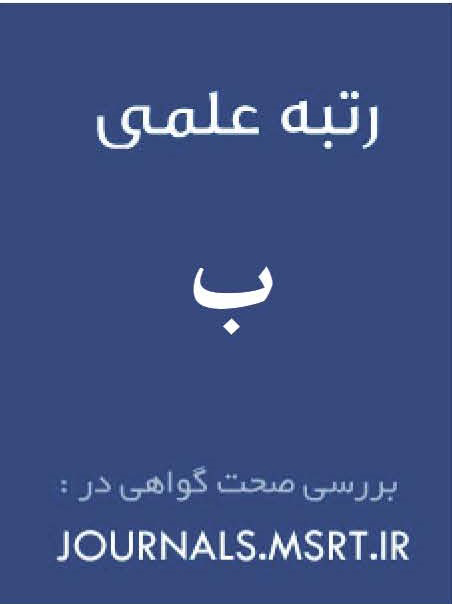Another Reading of the Shiqshiqiyya Sermon: A Systemic Functional Linguistic Analysis in Light of Narrative and Literary Commentaries
Keywords:
Amir al-Mu'minin (AS), ahj al-Balagha, Sermon al-Shiqshiqiyyah, Hallidayan Systemic Functional Approach, Textual MetafunctionAbstract
The present study aims to examine the effectiveness of text linguistics in uncovering the multiple semantic layers of religious texts. In this context, the Sermon of al-Shiqshiqiyya is analyzed based on the textual metafunction within Halliday’s systemic functional linguistics framework. The research employs a descriptive-analytical method, analyzing the sermon in terms of thematic structure as well as various cohesive devices—grammatical, lexical, and conjunctive—that contribute to its overall coherence. The linguistic findings are systematically compared and complemented with the interpretations of prominent Hadith commentators, such as Mulla Muhammad Baqir al-Majlisi in Bihar al-Anwar and Hashemi Khuei in Minhaj al-Bara‘a, along with related rhetorical and conceptual studies. In relevant parts of the analysis, references are also made to managerial insights derived from the textual structure. The findings reveal a high degree of structural and semantic cohesion in the sermon, where the full range of the textual metafunction is skillfully employed to produce a coherent, dynamic discourse that accurately conveys Amīr al-Muʾminīn (peace be upon him) perspective and emphasizes key concepts. In most cases, the linguistic patterns align closely with classical commentarial interpretations. The study demonstrates that integrating systemic-functional linguistic analysis with reliable narrative and literary commentaries offers a powerful tool for revealing the rich semantic and rhetorical layers of religious texts. This interdisciplinary approach not only deepens literary and fiqh al-ḥadīth understanding but also enables the extraction of secondary meanings and cross-disciplinary insights—such as those relevant to the field of Islamic management.
Downloads
References
Abbasi, A. A. (2019). nalytical comparison of the views of two expositors of Nahj al-Balagha (Ibn Abil-Hadid and Ibn Meytham) on Sheqsheqiya sermon. Shi'ite Studies, 17(66), 37–54.
Abduh, M. (n.d.). Qadim Nahj al-Balagha. Dar Ihya al-Turath al-Arabi.
Abdullah, M. H. (2002). Ibrahim Touqan (His life and technical studies in his poetry). Abdulaziz Saud Al-Babtain Foundation for Poetic Creativity.
Ahmadi Givi, H., & Anvari, H. (1996). Dastur-e zaban-e Farsi (Persian Grammar) (Vol. 1). Fatemi Publications.
Al-Jafari al-Zaynabi al-Isfahani, M. b. T. (2024). Kalemat Sayyid al-Arab Abi al-Hasan Ali ibn Abi Talib Salawat Allah Alayh. Researchers of Commission, Al-Allamah al-Majlesi Library.
Amiri Khorasani, A., & Ali Nejad, H. (2015). The sea of rhetoric in the sermons of Nahj al-Balagha based on structural coherence. Literary Research Quarterly, 63, 7–31.
Amraei, M. H., & Bamari, A. W. (2020). Analysis of cohesion factors in Imam Ali's Shiqshiqiyyah sermon based on Halliday & Hasan's model. Institute of Humanities and Cultural Studies, 175–202.
Bahrani, M. b. A. (1983). Commentary on Nahj al-Balagha (Ibn Maytham's Commentary). Dar al-Kitab Publishing.
Boroujerdi, M. (2001). A look at the commentaries of Nahj al-Balagha. Qabasat(19).
Eghbal, E. (2023). Rhetorical Manifestations in the Shiqshiqiyyah Sermon of Nahj al-Balagha [Research]. Safineh The quarterly of specialized studies Special issue on the Quran and Hadith, 20(78), 159–174.
Fotouhi, M. (2010). Rhetorical imagery (2nd ed.). Sokhan Publications.
Ganjali, A., & Salmanihaghighi, M. (2023). Analyzing the function of relational coherence components in the organization of the syntactic-semantic structure of the Holy Quran based on the approach of McHoliday and Ruqiyeh Hassan. Stylistics Studies of the Holy Quran, 7(2), 9–26.
Gholami, S. S., & Hadi Fard, F. (2024). A study of coalesce of words with meaning in Nahj al-Balaghea's sermon of Shagshaqiya based on the theory of Maurice Grammon. Semantic Studies in Literary Texts, 1(4), 18–34.
Halliday, M. A. K. (1985). An Introduction to Functional Grammer. Edward Amold.
Halliday, M. A. K. (1994). Systemic theory. In Asher.R.E (Ed.). https://doi.org/10.1016/B978-0-08-042580-1.50048-9
Halliday, M. A. K., & Hasan, R. (2014). Language, context and text (M. Nobakht, Trans.). Shahroud.
Hashemi Khuei, M. H. (1980). Minhaj al-Bara’a fi Sharh Nahj al-Balagha. Maktabat al-Islamiyya.
Ibn Abi al-Hadid al-Madaini, A. H. I. a. D. b. H. A. b. M. b. M. (1983). Commentary on Nahj al-Balagha. Maktabat al-Mar’ashi al-Najafi.
Ibn Babawayh, M. b. A. (1983). Ma'ani al-Akhbar Islamic Publications Office.
Ibn Babawayh, M. b. A. (2006). Ilal al-Shara'i Davari Bookstore.
Ibn Shahrashub al-Mazandarani, M. b. A. (1959). Manaqib Al Abi Talib. Allameh Publications.
Jahanbakhsh, J. (2002). Darāyatī Naw-Āyīn az Riwāyatī Dīrīn (Ta’ammulī Dīgar dar Khuṭbah al-Shiqshiqiyyah wa Farjām-i ān)" [A Modern Understanding of an Ancient Narration (A Further Reflection on Sermon al-Shiqshiqiyyah and its Conclusion)]. Hawzah-yi Isfahan, 9.
Khaledi Sardashti, A., & Mousavi Bafrouei, S. M. (2021). A phonological study of Shaqshaqiyeh sermon and its position on the semantic meaning of letters and words. Literary Studies of Islamic Texts, 6(20), 49–66.
Mahmoudi, S., Cheraghivash, H., & Mirzaei Al-Husseini, S. M. (2019). Analysis of the literary discourse strategy in the Shaqshaqiya sermon. Quran and Hadith Studies, 51(1), 201–224.
Majidi, H., & Alizadeh Teymurluyi, Y. (2019). Affective and magical aspects of the Sheqsheqieh sermon. Literary Studies of Islamic Texts, 4(15), 151–170.
Majlisi, M. B. b. M. T. (1984). Bihar al-Anwar al-Jami'a li-Durar Akhbar al-A'imma al-Athar. Dar Ihya al-Turath al-Arabi.
Mishkat al-Dini, M. (2009). The secret of linguistics Ferdowsi University Press.
Mohammadi, R., & Bazoubandi, H. (2021). The study of the way of meaning exchange in Shaqshaqiya sermon of Nahj al-Balagha within Halliday’s Systemic Functional Linguistics (SFL) (2014). Language Science, 8(13), 115–149.
Moin al-Dini, F. (2003). Techniques of creating textual cohesion in Kalīlah wa Dimnah. Fornagh Journal(46), 303–326.
Mousavi Bafroei, M., Ghafoorimanesh, M., Zare Zardini, A., & Nazari, R. (2022). Conceptual analysis of Shegsheqiyah lecture, with an emphasis on foregrunding in the method of metaphor and allusion. Emamat Pajouhi, 12(1), 167–187.
Mousavi, S. S. (1997). Tamam Nahj al-Balagha. Imam Sahib al-Zaman Institute (AJ).
Mufid, M. b. M. (1992). Al-Irshad fi Ma'rifat Hujaj Allah 'ala al-'Ibad. Sheikh Mufid Congress.
Najafi Ivaki, A., Rasoulnia, A. H., & Kaveh Nooshabadi, A. (2017). A textual study of al-Shiqshiqiyya sermon emphasis on Searle`s Speech Act Theory. Quarterly Journal of Nahj al-Balagha Research, 5(19), 1–17.
Nouroozi, H., & Gholamhosseinzadeh, G. (2010). The role of temporal connective factors in text cohesion. Journal of Kavoshnameh in Persian Language and Literature, 10(19), 97–122.
Pahlavan, M. (2021). Textual analysis and translation of Nahj al-Balagha. Dar al-Kutub al-Islamiyya.
Rafat, M. (2011). Methodology of 'Minhaj al-Bara'a fi Sharh Nahj al-Balagha'. Hadith Sciences, 59, 207–244.
Rafat, M. (2018). Ibn Abi'l-Hadid and Maitham al- Bahrani: A comparative analysis of Shaqshaqiya sermon. Nahjolbalagheh Research, 17(2), 59–96.
Robins, R. H. (2014). A short history of linguistics (A. M. Haghshenas, Trans.). Maad Publications.
Sabzianpour, V. (2010). Translation challenges of Imam Ali's sermons in Nahj al-Balagha. Quran and Hadith Studies Journal(1), 77–98.
Salehi, F. (2007). Semantics and Halliday's systemic functional grammar. Book of the Month: Literature(8), 32–41.
Salehi, P. (2022). A new reading of the Jihad sermon of Imam Ali (a.s.) based on the theory of textual meta-functionality (Halliday's role-oriented approach). Imam Ali ΄s Studies, 13(26), 169–193.
Shafai, A. (1983). Advanced Persian grammar. Asatir Publications.
Shamisa, S. (1989). A new look at rhetoric. Ferdows Publishing.
Shamisa, S. (2008). Bayan (Rhetoric). Ferdows Publishing.
Sharif al-Radi, M. b. H. (1993). Nahj al-Balagha. Hijrat Publications.
Sharifi, M. (2001). The rhetoric in Nahj al-Balagha: A stylistic analysis of eloquence in Nahj al-Balagha. Basharat Humanities Sciences Journal(23), 24.
Tabrasi, A. b. A. (1983). Al-Ihtijaj 'ala Ahl al-Lijaj. Morteza Publications.
Taleghani, M. (1995). A reflection on Nahj al-Balagha. Ministry of Culture and Islamic Guidance.
Tayarani, M. S., Soltani, S. A., & Rabiee, A. (2019). The analysis of the Shaqshaqiya sermon with reliance on sociopolitical context, theory and the principles of rhetoric. Journal of Linguistics and Khorasan Dialects, 11(1), 173–192.
Tusi, M. b. a. H. (1993). Al-Amali. Dar al-Thaqafa.
Wikishia. (2025). Al-Shiqshiqiyya Sermon. In Wikishia (Arabic) (February 16, 2025 ed.).
Yarmohammadi, L. (2004). Common and critical discourse analysis Hermes.
Zoodranj, S., & Arbati Moghadam, S. (2022). Analysis of Shaqshaqiya sermon by the critical discourse analysis approach. Quarterly Journal of Nahj al-Balagha Research, 10(37), 115–139.
Downloads
Published
Submitted
Revised
Accepted
Issue
Section
License
Copyright (c) 2025 Islamic Knowledge and Insight

This work is licensed under a Creative Commons Attribution-NonCommercial 4.0 International License.







